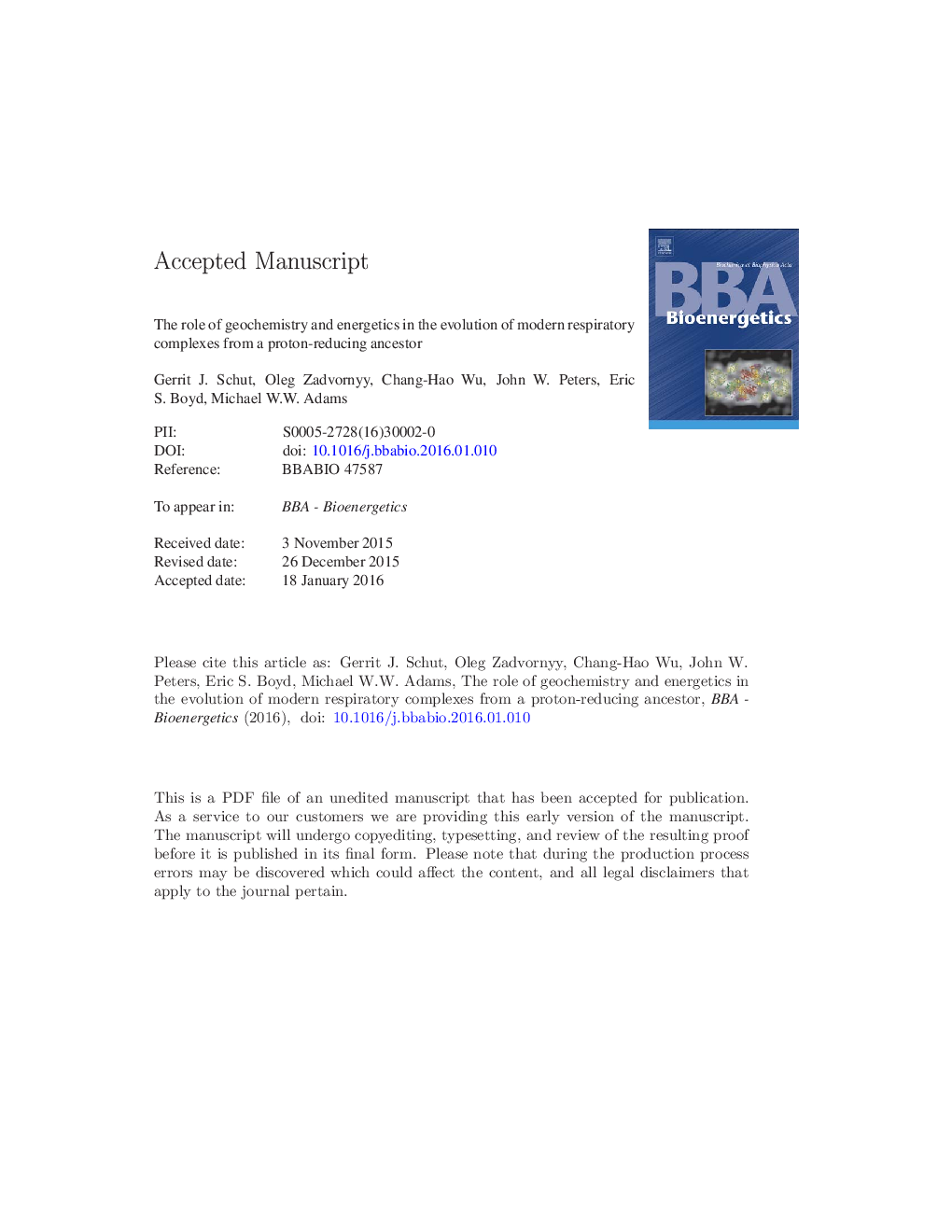| Article ID | Journal | Published Year | Pages | File Type |
|---|---|---|---|---|
| 10795203 | Biochimica et Biophysica Acta (BBA) - Bioenergetics | 2016 | 47 Pages |
Abstract
Complex I or NADH quinone oxidoreductase (NUO) is an integral component of modern day respiratory chains and has a close evolutionary relationship with energy-conserving [NiFe]-hydrogenases of anaerobic microorganisms. Specifically, in all of biology, the quinone-binding subunit of Complex I, NuoD, is most closely related to the proton-reducing, H2-evolving [NiFe]-containing catalytic subunit, MbhL, of membrane-bound hydrogenase (MBH), to the methanophenzine-reducing subunit of a methanogenic respiratory complex (FPO) and to the catalytic subunit of an archaeal respiratory complex (MBX) involved in reducing elemental sulfur (S°). These complexes also pump ions and have at least 10 homologous subunits in common. As electron donors, MBH and MBX use ferredoxin (Fd), FPO uses either Fd or cofactor F420, and NUO uses either Fd or NADH. In this review, we examine the evolutionary trajectory of these oxidoreductases from a proton-reducing ancestral respiratory complex (ARC). We hypothesize that the diversification of ARC to MBH, MBX, FPO and eventually NUO was driven by the larger energy yields associated with coupling Fd oxidation to the reduction of oxidants with increasing electrochemical potential, including protons, S° and membrane soluble organic compounds such as phenazines and quinone derivatives. Importantly, throughout Earth's history, the availability of these oxidants increased as the redox state of the atmosphere and oceans became progressively more oxidized as a result of the origin and ecological expansion of oxygenic photosynthesis. ARC-derived complexes are therefore remarkably stable respiratory systems with little diversity in core structure but whose general function appears to have co-evolved with the redox state of the biosphere. This article is part of a Special Issue entitled Respiratory Complex I, edited by Volker Zickermann and Ulrich Brandt.
Related Topics
Life Sciences
Agricultural and Biological Sciences
Plant Science
Authors
Gerrit J. Schut, Oleg Zadvornyy, Chang-Hao Wu, John W. Peters, Eric S. Boyd, Michael W.W. Adams,
